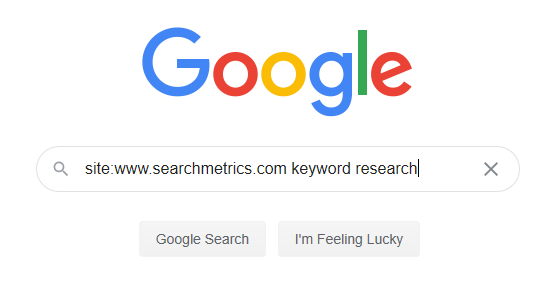This article was updated on 2022/23/06.
SEO is definitely about playing the long game. However, once in a while, there are some small changes that make a big difference — fast.
Are you ranking well enough to see increased organic sales?
Here are a few tips for short-term SEO results.
1. Check if you’re blocking content from search engines
Determine whether your website’s robots.txt file is blocking major pages, directories or anything else highly important for crawlability.
You can find your robots.txt file by entering /robots.txt after your domain name – www.your domain.com/robots.txt
If you find blocked resources in the robots.txt file, dig a little further to determine the reasons.
When working with clients, a scenario I find often is that resources are blocked because one developer or one SEO expert told the business to do it. But often the decision to block resources was made years ago. And, like any decision made years ago, the people who did made the decision no longer work at the company and the ones who do now work at the company either can’t remember or don’t know why those resources were blocked.
If you’re an SEO expert, I suggest looking carefully at blocked resources to make sure they’re actually necessary. Also crawl the website and identify pages that are noindexed that shouldn’t be. Is it your SEO plugin blocking content? Or has someone hard coded a “noindex” directive into your pages?
If you’re not an SEO expert, grab one and grab your developer, and figure out what’s blocked and why.
Helpful Links
Google Search Console Robots.txt Tester
VoicesofSearch Podcast “Technical Issues
VoicesofSearch Podcast “How to Conduct an SEO Audit
2. Optimized internal linking
When you link a portion of text to another part of your website, this is an internal link and the text is called anchor text (this link is an internal link) and is also sometimes called an ‘editorial link’.
Internal links provide extra information about what a linked-to page is about. For example, my link above ‘anchor text’ tells Google that the page being linked to is about anchor text as a topic.
When there are several of these internal links pointing to a page the search engines can infer more information about the content of that page being linked to. This can sometimes give your rankings a boost. Because the internal links add a little more information about a page that lead to it being interpreted by search algorithms as being relevant for a search term or topic.
So, go to your blog, your product pages, your ‘About Us’ section and note where you could add anchor text that’s useful to customers. Plus, the internal link anchor text also gives information to the search engines.
But, don’t go crazy on this technique by adding 10 internal links on one page sending people all over your website. Too many editorial links on one page often gives a poor user experience and looks visually bad. Two to three editorial links per page is generally suitable.
If you want to quickly find pages to add internal links, grab one of your important keywords, visit Google and search for “site:www.yourwebsitehere.com keyword here.” Like this:

The search results show you which pages on your website Google identifies with the phrase/topic. Those pages are highly likely to include your keyword in the content and therefore provide a perfect opportunity for an internal link pointing back to the main page that you want to rank better.
Important note: Don’t employ this practice via external websites on a mass scale as this can result in breaking Google Webmaster Guidelines. See Link Schemes. And can result in your website being taken out of the search index. So, stick to internal links.
3. Focus on long tail
If your website is not ranking for major keywords in your industry, you’re not alone.
At the end of the day, there’s only so much room at the top for single-word terms and even two-word phrases sometimes. Positions 1, 2 and 3 on page one of search results pages for high volume keywords are the most highly contested real estate on the internet. Just take a look at the results after typing in “life insurance.” Notice there are businesses investing in ads and doing SEO. All of them are fighting for that top spot.
The next best thing for fighting your way to the top for difficult keywords is to look at longer search phrases. For example: Instead of trying to rank for the keyword “life insurance” you could try “how to decide whether or not I need life insurance,” “how much does life insurance cost,” “what is the best age to buy life insurance,” “how much money does my family get if I have life insurance,” etc.
Another example: Instead of “apartments for rent” try “apartments for rent in Surrey Hills,” “how to find the best apartments for rent in London” or “apartments for rent under $1000 per month in London.”
An FAQ section, blog, or articles section on your website work beautifully for these kinds of longer search phrases.
To get results, the key here is do this for more than one page. As long-tail search terms have less search volume, you’re unlikely to see crazy amounts of traffic after publishing just one new FAQ or one new post. You’re going to have to do it more than once on more than one page with different phrases.
The list is endless on what you can do with this idea. You can use tools like our Content Experience and Research Cloud (go to the Organic Rankings Long-Tail Data report) or other keyword research tools to uncover what people are searching for.
Pro tip two: Google Search Console has a report called Performance. If you log into your own Console account and drill down into the URL you want to improve, you can find out which long-tail keywords show up in the results, like this:

In this example, you can see we get traffic for a long-tail phrase “on page search engine optimization refers to.” You could update your existing content on one page to a long-tail phrase you find here for your selected page. This will make your page even more relevant for the phrase and potentially improve rankings in a very short period of time.
Pro tip two: If you want to find out if a keyword phrase has a lot of competition, use the Searchmetrics Suite to find major competitors for a specific phrase. If you’re not a Suite customer, get in touch for a tour to discover the potential.
For those of you who made it this far you might be thinking, “this sounds like a lot of work and not like a quick win” and, in some cases this is true. But if you take a good look at all the content you’ve already published you might find existing pages that actually fit long tail search terms. Take those pages, change the content in the headings and sub-headings, Title Tag and H1 for pages that are not getting any traffic at all, to a keyword phrase you researched. Then, leave it alone for a few weeks and see if traffic goes up or down.
If a page is performing poorly already, you have nothing to lose by trying. Of course, you should take a look at the content and see if you can improve that for website visitors too.
4. Speed things up
If your top traffic pages take a while to load you might have a fantastic opportunity sitting there waiting for you right now.
When your website loads fast it can prevent people from clicking that “Back” button in their browser.
This matters because one of the things Google is able to detect is the timestamp after someone clicks away to a website from Google and how fast they return to the Google search results page (using the “Back” button). If Google detects via a timestamp when people click through to your website and don’t come back to their search engine, extra points (not really points, just an expression) go to your website for giving people a great user experience.
User experience is the name of the game here. Google’s algorithm has many metrics measuring that experience. The timestamp on the “Back” button is one of them.
In short, speed up the load time of your website and encourage people to hang around longer and you might just see your rankings and traffic go up both short and long term.
So, grab your developer, take a look at your stats using one of the tools below, and get to work fixing things.
Learn More
Google Page Speed Insights Tool
Google Lighthouse Rankings Study
5. Remember to focus — on a keyword, that is
When you carefully plan your entire website so that you have clear topics and target keywords for each unique page, you’re on a winning path.
One of the most powerful SEO techniques is Title Tag optimization. Sometimes we are too into the details and we miss some of the simple things. We’re human, after all.
This tip is a simple but powerful one: Review and edit your Title Tags.
Your Title Tag is written in the meta data behind the scenes and is not part of the main body copy. You can find it by hovering over the browser tab though, like this:

You can edit this on the backend of your website.
If you have a group of keywords that you are using on one page — whether it’s the home page, a blog post or a product listing — you need to choose 1 to 3 primary keywords out of the group. These 1 to 3 phrases generally are the keywords that describe what this page is about and are the keywords your SEO team puts a lot of effort in trying to rank for — and your Performance Marketers might be spending money on. In other words, these 1 to 3 phrases are instrumental to your business, you need to be ranking well for them.
In the example above, we have one main keyword phrase: “how to perform a website audit.” This is a typical long-tail example as described in Tip 3. In this case, we want to rank for that phrase as it is critical for our business. And, as for Björn’s name being in the Title Tag too, he brings some traffic to our website if people search for him. Test us out and Google the phrase “Björn Darko Audit.”
In summary
These tips are powerful when used correctly. So, get started. Make a plan, check it with an SEO expert, and measure the results.
Of course, if you’d like some support, that’s what we’re here for. So, feel free to get in touch with our consultants to discover how we help take businesses forward and help you with your own optimization.
